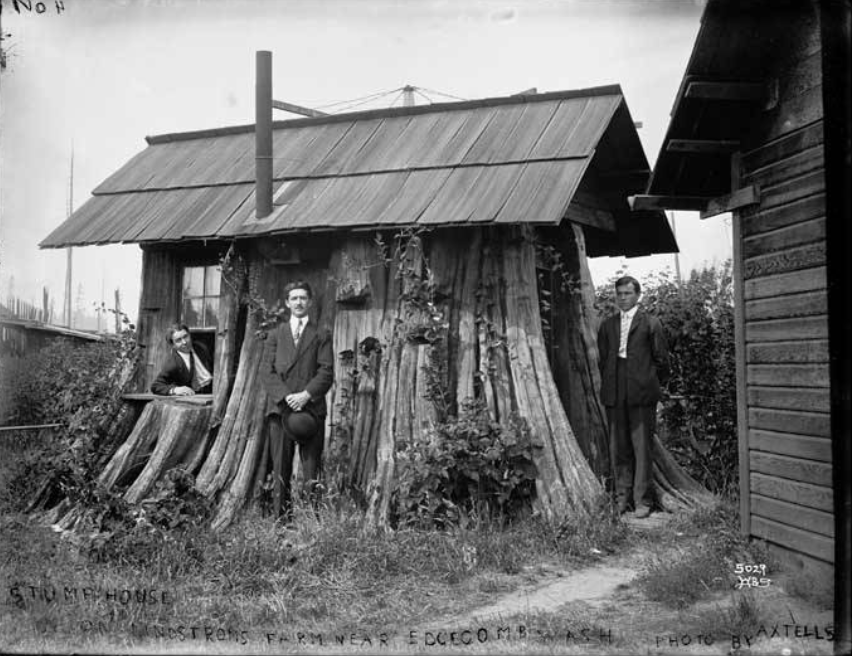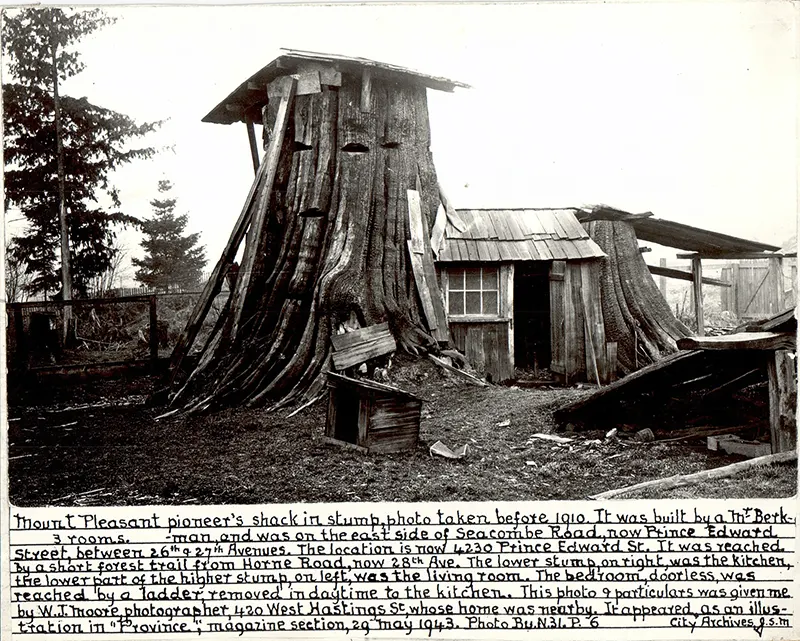Appalachian Stump Houses: Rooted in History

Picture the towering forests of old-growth Appalachia, sunlight dappling through a canopy of ancient trees. Imagine a different kind of home nestled among these giants. Forget the familiar image of the log cabin. Here, amidst the roots and fallen leaves, rise simple dwellings built not from felled trees but from the massive stumps they left behind. These were the Appalachian Stump Houses, ingenious and practical abodes that spoke to the resourcefulness of the mountain people.
In the mid-18th century, German and Scots-Irish immigrants traveled the Great Wagon Road south from Lancaster, PA, through the Shenandoah Valley, into the Blue Ridge Mountains. The Germans settled in the Valley, but the Scots-Irish preferred the mountains. Land was cheaper there, and government interference in their affairs was less likely. Also, the forest’s deep blue-green color was reminiscent of Scotland’s topography.
In the 19th century, America’s westward expansion fueled economic growth, and the rich forests of Appalachia became prime sources of lumber. Logging became relentless, and the felling of massive chestnut trees—nearly twenty-five percent of the forests—left behind enormous stumps. These trees, often reaching a staggering height of two hundred feet and a width exceeding fifteen feet, were usually cut ten to fifteen feet above the ground, avoiding the twisted and knotted wood closer to the earth. Thanks to the rot-resistant nature of the chestnut, these stumps could endure for over a century after being cut down. What followed was a remarkable display of ingenuity and resourcefulness as these stumps became more than just remnants of towering trees—they became homes, livestock shelters, and symbols of self-sufficiency.

The Expediency of Appalachian Stump Houses
A Legacy of Resilience
Appalachian stump houses were born out of necessity. With limited housing options, early pioneers looked to the giant stumps as a solution. By hollowing out these stumps, pioneers transformed them into dwelling spaces that offered shelter to families in the rugged mountain landscape. The stump houses symbolized self-reliance, as families thrived without being beholden to landlords or banks. These structures embodied the spirit of independence and the determination to make the most of available resources.
Ingenious Construction
Hollowing out a stump was no small feat, but the pioneers proved their resourcefulness and determination. Armed with pickaxes and hand tools, they carefully carved out living spaces within the soft interior of the stumps, creating rooms as spacious as 20 feet wide. The interiors of these stump houses were not just bare dwellings; they were meticulously outfitted with windows, doors, fireplaces, and various other amenities. Some of these remarkable structures even boasted two or three stories, providing private bedrooms for each family member. The stump houses offered a sense of security, warmth, and belonging at a time when cash was scarce.
More than Just Homes
While Appalachian stump houses primarily served as residences, their adaptability allowed them to be used for various purposes. Some pioneers repurposed these structures to shelter their animals, taking advantage of the protective barrier provided by the massive root systems and thick walls. Stump houses offered a secure and practical solution for keeping chickens and other livestock safe from predators. Sometimes, these versatile structures served as temporary living quarters while pioneers cleared land and built more permanent log cabins. With their flexibility and functionality, stump houses showcased the pioneers’ ability to make the most of the resources available to them.

Community Spaces and Post Offices
As more settlers migrated to the mountains, the need for public buildings arose. Appalachian stump houses were repurposed as post offices, maximizing available resources. These unconventional post offices functioned well and served the purpose for decades. With their rich history and unique charm, stump houses were featured on 27 United States postcards, immortalizing them as symbols of mountain heritage.
The Enduring Legacy
In our world of towering skyscrapers and suburban McMansions, Appalachian stump houses seem quaint and primitive. But, these remarkable structures, born out of necessity, became more than mere homes. They embodied the mountain folk’s practicality and resourcefulness, turning towering tree remnants into viable living spaces.
*Images are representative of a variety of stumphouse structures in logging areas of Appalachia and the west coast.


Comments are closed.